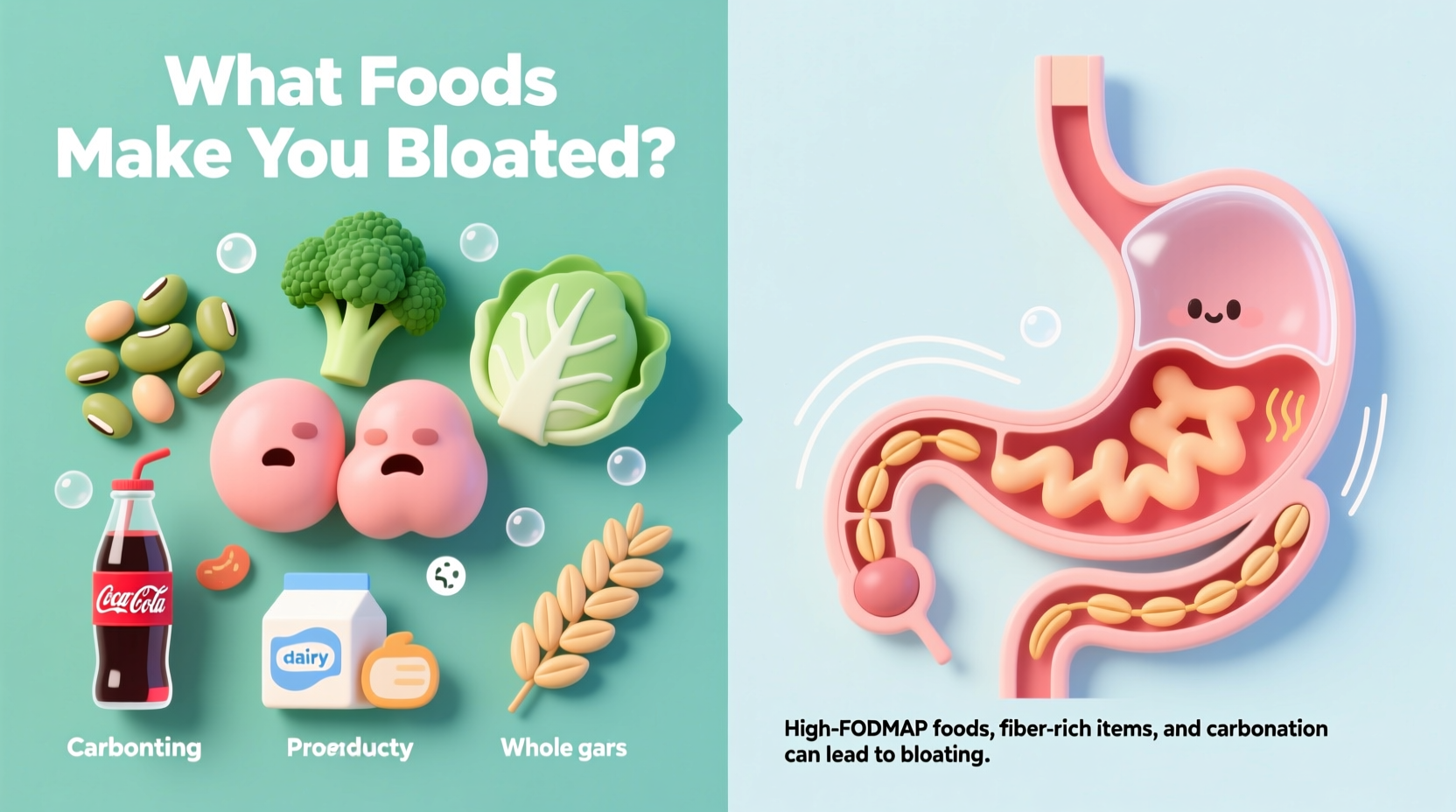Ever finished a meal feeling uncomfortably full, with your stomach visibly swollen and tight? You're not alone. Nearly 70% of adults experience occasional bloating, often directly linked to specific foods in their diet. Understanding which foods make you bloated isn't just about temporary discomfort—it's your first step toward digestive harmony and daily comfort.
The Digestive Science Behind Food-Induced Bloating
Bloating occurs when gas builds up in your digestive tract, causing that familiar swollen, tight feeling. Certain foods trigger this through several mechanisms: fermentation by gut bacteria, difficulty digesting specific carbohydrates (FODMAPs), lactose intolerance, or simply introducing excess air during consumption. Your unique gut microbiome composition determines which foods affect you most significantly.
Top Bloating Culprits: What Foods Make You Bloated
While individual reactions vary, research consistently identifies these food categories as primary bloating triggers:
Legumes: Beans, Lentils, and Chickpeas
These protein-rich foods contain raffinose, a complex sugar your body can't fully break down. When gut bacteria ferment raffinose in your large intestine, they produce hydrogen, methane, and carbon dioxide—leading to significant bloating. Soaking beans overnight and changing the water before cooking can reduce raffinose content by up to 50%, according to a National Institutes of Health study.
Cruciferous Vegetables: Broccoli, Cauliflower, and Cabbage
Packed with nutrients but notorious for causing gas, these vegetables contain raffinose similar to legumes. Their high fiber content also contributes to fermentation. Steaming rather than eating them raw can make these vegetables more digestible while preserving nutrients.
Dairy Products: Milk, Cheese, and Ice Cream
For the 65-70% of the global population with lactose intolerance, dairy causes bloating because they lack sufficient lactase enzyme to break down lactose. Hard cheeses and fermented dairy like yogurt typically cause fewer issues as they contain less lactose.
Wheat and Gluten-Containing Products
Wheat contains fructans, a type of FODMAP that triggers bloating in sensitive individuals. For those with non-celiac gluten sensitivity or celiac disease, gluten itself causes inflammation and digestive distress. Ancient grains like spelt or sourdough bread (where fermentation breaks down some FODMAPs) may be better tolerated.
| Food Category | Primary Bloating Compound | Typical Onset Time | Better Tolerance Options |
|---|---|---|---|
| Legumes | Raffinose | 4-8 hours | Soaked/cooked lentils, hummus |
| Cruciferous Veggies | Raffinose & Fiber | 2-6 hours | Steamed broccoli, roasted cauliflower |
| Dairy | Lactose | 30 min-2 hours | Hard cheeses, lactose-free milk |
| Wheat Products | Fructans | 2-4 hours | Sourdough bread, gluten-free oats |
Context Boundaries: Why Some People Tolerate These Foods Better
Not everyone experiences bloating from these foods—individual tolerance varies significantly based on several factors:
- Gut microbiome composition: People with more diverse gut bacteria often handle FODMAPs better
- Portion size: Small servings of problematic foods may not trigger symptoms
- Food preparation methods: Soaking, fermenting, or cooking can reduce bloating compounds
- Combined foods: Eating high-bloat foods with digestive aids like ginger or fennel can minimize effects
A study published in Gastroenterology found that only 30% of people with self-reported food intolerances actually reacted to those foods in controlled testing, highlighting how preparation and context significantly impact bloating.
Identifying Your Personal Bloating Triggers
Since individual reactions vary, follow this evidence-based approach to pinpoint your specific triggers:
- Keep a detailed food and symptom diary for 2 weeks, noting everything you eat and when bloating occurs
- Try an elimination diet by removing one suspected trigger food for 2-3 weeks
- Reintroduce foods systematically, one at a time, monitoring for symptoms
- Track portion sizes—many people tolerate small amounts of trigger foods
This method, recommended by the International Foundation for Gastrointestinal Disorders, helps distinguish true food intolerances from coincidental bloating.
Practical Strategies to Reduce Food-Induced Bloating
Before eliminating entire food groups, try these science-backed approaches:
- Soak and rinse legumes thoroughly before cooking to reduce oligosaccharides
- Cook vegetables instead of eating raw to break down complex fibers
- Try lactase enzyme supplements before consuming dairy if lactose intolerant
- Eat smaller portions of high-FODMAP foods throughout the day rather than all at once
- Include digestive herbs like ginger, peppermint, or fennel in meals

When Bloating Signals Something More Serious
While occasional bloating from certain foods is normal, consult a healthcare provider if you experience:
- Persistent bloating lasting more than 2 weeks
- Unintentional weight loss with bloating
- Bloody stools or severe abdominal pain
- Nighttime symptoms that disrupt sleep
These could indicate conditions like irritable bowel syndrome (IBS), inflammatory bowel disease (IBD), or other digestive disorders requiring medical evaluation.
Creating Your Personalized Bloating Management Plan
Understanding what foods make you bloated is just the beginning. The most effective approach combines identifying your personal triggers with strategic dietary adjustments. Start by focusing on one food category at a time, using proper preparation methods, and tracking your body's responses. Remember that digestive health improves gradually—be patient as you discover what works best for your unique system.











 浙公网安备
33010002000092号
浙公网安备
33010002000092号 浙B2-20120091-4
浙B2-20120091-4